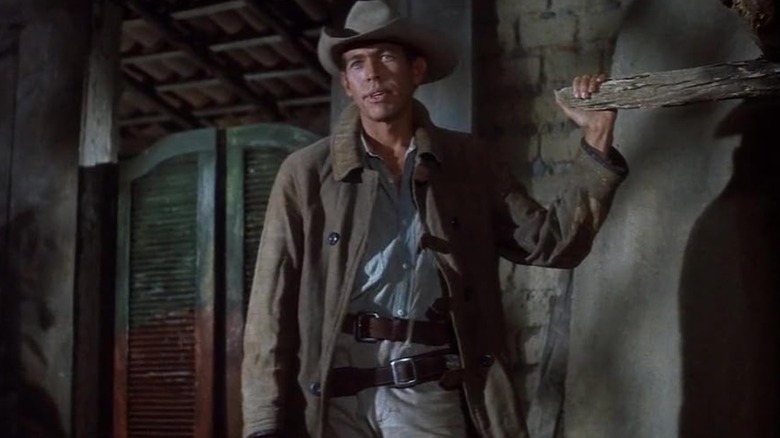We could obtain a fee on purchases constructed from hyperlinks.
60 years in the past this September, Clint Eastwood’s Man With No Identify stepped on display for the primary time in Sergio Leone’s “A Fistful of {Dollars}.” It will be a couple of extra years till the low-budget Spaghetti Western made it to America, however the actor’s star energy and the director’s abilities have been immediately recognizable for early adopters – even when critics took longer to get on board. By the point Leone had launched two extra Eastwood-led movies, rounding out what turned generally known as the {Dollars} Trilogy, Eastwood’s narrowed eyes and steely perspective had change into a elementary picture of the film cowboy.
The {Dollars} trilogy, which continued with “For A Few {Dollars} Extra” and concluded in 1966 with “The Good, The Dangerous, and The Ugly,” is now celebrated as probably the greatest on-screen Western sagas of all time. The style would quickly die out (or not less than go right into a deep hibernation), however Leone’s singular cinematic gaze and Eastwood’s antihero framing would endure. But regardless of the film’s legacy, historical past nearly went very in another way. In keeping with a latest BBC retrospective, Leone did not have Eastwood in thoughts for the trilogy’s lead function, and initially wished a distinct actor for the half.
Earlier than approaching Eastwood, Leone was reportedly contemplating hiring James Coburn. Regardless of not precisely being a family identify amongst trendy audiences, Coburn was the larger star of the 2 choices on the time, recognized for his function because the group’s instrument producer in “The Nice Escape” and because the knife-throwing Britt in “The Magnificent Seven” (pictured beneath). In keeping with Robert C. Cumbow’s e book “The Movies of Sergio Leone,” Coburn was “the epitome of exhausting heroism and sex-symbol machismo” within the ’60s. He was, because the writer put it, “tall, grey, chilly, and stony as a monument” — an outline that would additionally, for probably the most half, match Eastwood. Sadly for Coburn, he was additionally apparently too costly for Leone across the time that the director started trying to forged his unofficial cowboy remake of “Yojimbo.”
James Coburn wasn’t in Leone’s funds
In keeping with the BBC (and biographers David Downing and Gary Herman), casting Coburn within the function would’ve include a $25,000 price ticket, which interprets to 1 / 4 of one million {dollars} in immediately’s cash. In distinction, Eastwood’s invoice would solely come to $15,000, or $152,000 immediately. Eastwood was the extra inexpensive choice, as he had fewer main roles beneath his belt to discount with. He’d already minimize his tooth on the favored Western TV present “Rawhide,” and had appeared in exhibits like “Alfred Hitchcock Presents” and “Maverick,” however exterior of uncredited roles in Fifties B-movies like “Tarantula!” and “Revenge of The Creature,” his large display resume was sparser than Coburn’s.
“I did not see any character in ‘Rawhide,’ solely a bodily determine,” Leone, who died in 1989, is quoted as saying within the BBC piece. On the Western present, Eastwood performed cowpoke supervisor (or “ramrod,” as they are saying within the biz) Rowdy Yates for 8 seasons, persevering with within the pretty skinny function even after his first flip because the Man With No Identify. “What struck me most about Clint was his indolent means of transferring. It appeared to me Clint carefully resembled a cat,” Leone as soon as mentioned. That early feline physicality gave strategy to a sequence of gritty tough-guy performances that outlined masculinity for a era — or a number of.
“A Fistful of {Dollars}” made cash internationally upon launch — although, because the BBC notes, it did not make its strategy to American audiences till 1967, after “Rawhide” had ended. At present, all three entries in Leone’s trilogy have gained the appreciation they deserve. Its conclusion, “The Good, The Dangerous, And The Ugly,” is continuously cited as probably the greatest motion pictures ever made (it is also Quentin Tarntino’s favourite).
Coburn did finally work with Leone, however cash and availability considerations meant the pair would not make a film collectively till 1971’s “Duck, You Sucker!” That film clearly did not attain the heights of those Coburn had handed years earlier, however you would possibly understand it by its different identify: “A Fistful of Dynamite.”



